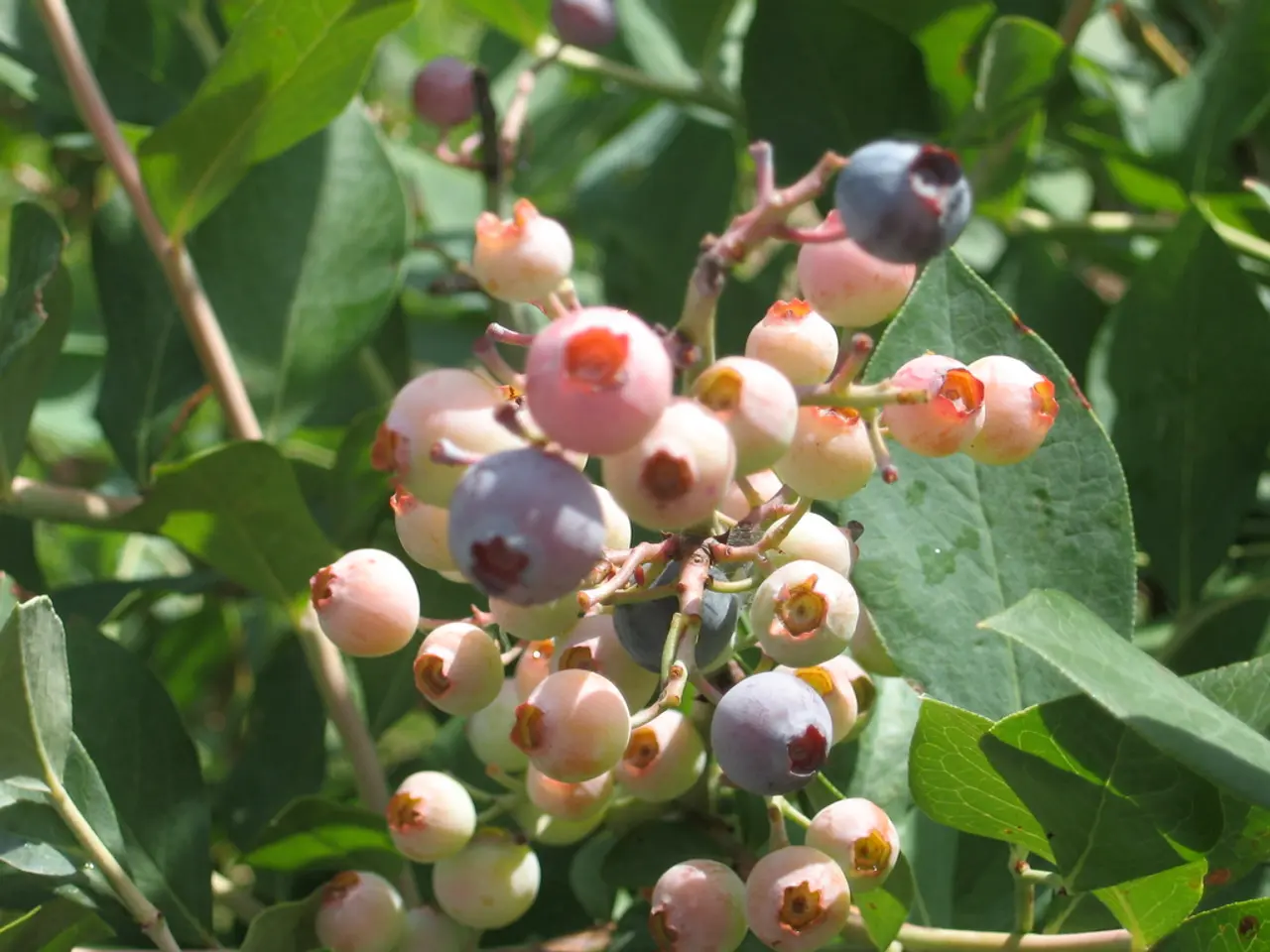Harvest your edible plants in June
Growing Sweetcorn and Controlling Blackfly on Broad Beans in June
In the June garden, there are two key areas of focus for gardeners: growing sweetcorn and managing blackfly on broad beans.
Sweetcorn Growing
To grow sweetcorn successfully, plant your indoor-started or newly bought seedlings outdoors after the last frost risk, typically by late May or early June, when plants are about 8–15 cm tall. Sweetcorn prefers full sun and well-drained, consistently moist soil.
For optimal pollination, plant sweetcorn in blocks or groups rather than single rows, spacing plants about 34–45 cm apart (or 20 cm for baby corn varieties). Harden off the plants before transplanting and water them regularly, especially when tassels appear. Harvest when the silk turns brown and kernels emit milky juice upon piercing.
A thick mulch cover of compost between plants can help conserve water and prevent evaporation. Seeds take just over a week to germinate, and leaving one fruit per cluster after thinning ensures plenty of space and light for the remaining fruits to develop.
Controlling Blackfly on Broad Beans
Blackfly are a common pest on broad beans, feeding on the plant's sap and leaving sticky honey dew that attracts ants. To manage blackfly, it is effective to "tip out" or remove the growing tips of the broad bean plants where blackflies congregate. This reduces the risk of heavy infestations.
Regular inspection and early removal of infested tips can help manage the pest pressure. Maintaining healthy plants by consistent watering and avoiding overcrowding can also reduce blackfly problems. Using an organic soapy solution to spray blackfly is another method for control.
However, it's important to note that cutting off the tips of broad bean plants can help reduce blackfly population, but they will recolonize. Repeating blackfly control measures several times is necessary to keep them at bay.
Transplanting excess seedlings is worth trying, as it can help reduce the number of broad beans available for blackfly to infest. Using scissors to remove small and misshapen fruits from apple and pear trusses is a method for thinning, which can also help reduce pest pressure on these crops.
Courgettes, cucumbers, tomatoes, celeriac, celery, lettuce, spinach, and leaves near to harvest require more frequent watering. Watering vegetables at ground level and using a soaking method encourages deep rooting and drought resistance.
Apples and pears often set more fruit than they can support and thinning is necessary to improve fruit quality and prevent tree exhaustion. After thinning and growth, water the sweetcorn plants well and mulch with compost or manure. Partial pollination can cause empty and misshapen cobs, so sweetcorn are wind pollinated, so grouping them together allows for pollination.
Blasting blackfly off with a jet of water from a hose pipe can help control them. In summary, a combination of good cultural practices and simple, effective methods can help gardeners optimize sweetcorn growth and manage blackfly on broad beans during the June growing season.
To create an ideal lifestyle for home-and-garden enthusiasts, consider expanding garden areas to include sections for growing sweetcorn and improving broad bean health by controlling blackfly.After successfully growing sweetcorn and managing blackfly on broad beans, one could enjoy fresh corn in various recipes, contributing to a nurturing home-and-garden lifestyle that fosters self-sufficiency and cultivates a love for gardening.







